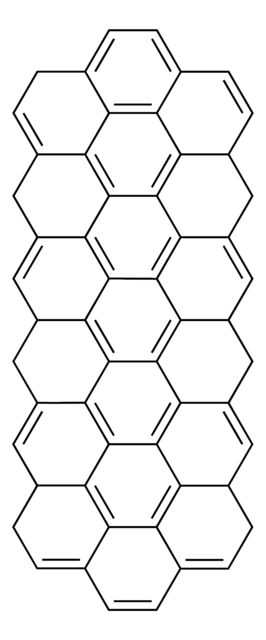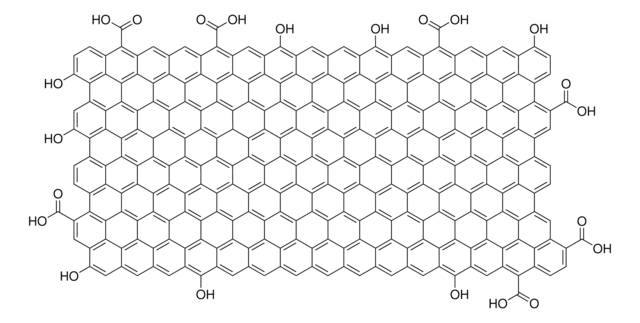추천 제품
분석
≥90.0% carbon basis (TGA)
양식
powder
길이 × 너비
2-15 μm × 40-250 nm
density
2.2745 g/mL (He gas method)
벌크 밀도
0.0970 g/mL (Mercury Porosimetry)
유사한 제품을 찾으십니까? 방문 제품 비교 안내
일반 설명
애플리케이션
- Composites.
- Conductive inks.
- Electrodes for LiB.
- Energy storage & harvesting applications.
- Bio-medical applications.
- Preferred dispersing organic solvents: pyrrolidones and chlorinated solvents.
- Less preferred dispersing organic solvents: cyclohexanone and γ-butyrolactone.
- Aqueous dispersions are possible at 0.1mg/mL with triton-X-100, sodium cholate and deoxycholate and cellulose-based surfactants.
분석 메모
ID/IG = 0.65±0.07
I2D/IG = 0.74±0.03
2D FWHM = 63 cm-1
법적 정보
신호어
Danger
유해 및 위험 성명서
Hazard Classifications
Carc. 2 - Repr. 2 - STOT RE 1 Inhalation
표적 기관
Lungs
Storage Class Code
6.1C - Combustible acute toxic Cat.3 / toxic compounds or compounds which causing chronic effects
WGK
nwg
가장 최신 버전 중 하나를 선택하세요:
문서
Graphene is a unique two-dimensional (2D) structure of monolayer carbon atoms packed into a dense honeycomb crystal that has attracted great interest due to its diverse and fascinating properties.
Since its discovery little more than a decade ago,1 the two-dimensional (2D) allotrope of carbon—graphene—has been the subject of intense multidisciplinary research efforts.
Graphene's unique properties spark interdisciplinary interest; its honeycomb structure offers electrical, optical, and mechanical marvels.
Graphene nanoribbons (GNRs) are quasi-one-dimensional narrow strips of graphene comprised of sp2-hybridized carbon atoms arranged into hexagonal honeycomb lattice configurations.
자사의 과학자팀은 생명 과학, 재료 과학, 화학 합성, 크로마토그래피, 분석 및 기타 많은 영역을 포함한 모든 과학 분야에 경험이 있습니다..
고객지원팀으로 연락바랍니다.







